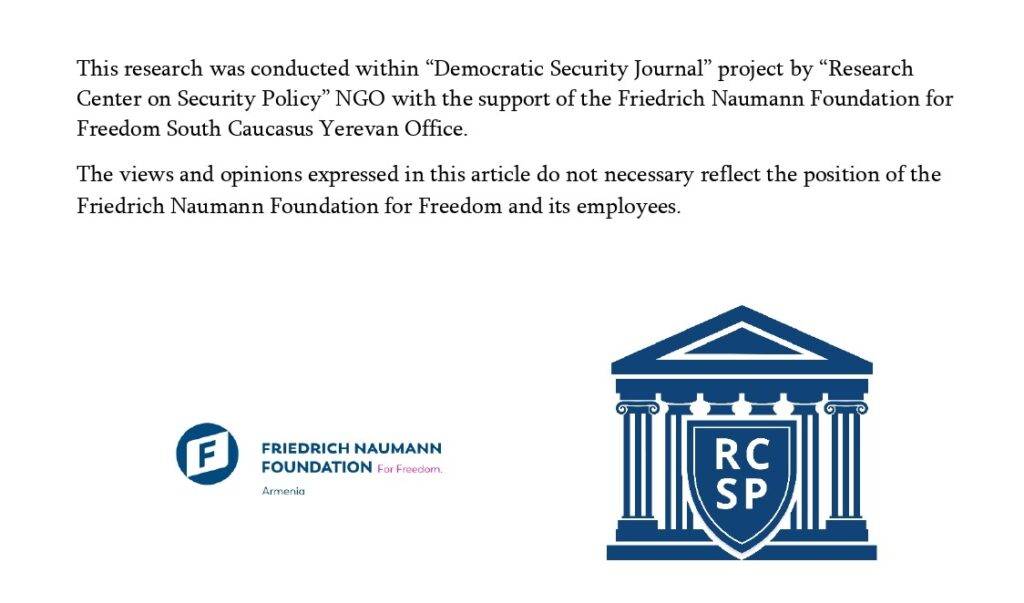This work is part of a broader analytical series that will examine the electoral and party institutions and practices in the Republic of Armenia, their specificities, and their impact on other political institutions, particularly in the context of the 2026 elections and the proposed changes. In this paper the phenomenon of electoral alliances in Armenia will be examined, the rationale behind their regulation, their historical trajectory, and prospects for improvement. In addition to content and situational analysis methods, comparative, quantitative, and descriptive statistical methods were also employed in the study to examine legal acts.
For nearly two years now, a draft project proposing amendments to the Electoral Code and other legal acts defining the rules of the electoral process has been on the agenda, primarily in preparation for the 2026 parliamentary elections. The Venice Commission[i]recommends that no electoral changes be made within one year before the elections, to ensure a fair and competitive environment. Based on this, it can be assumed that the electoral reforms should be adopted by June 2025.
The proposed changes are extensive, yet they fail to address one critical issue: electoral alliances. The general reason for this oversight, which is characteristic of public policy development in Armenia, is the absence of a clear concept and the lack of well-defined public authority perceptions regarding the desired structure of the political system. While explanations are provided for the proposed amendments within the electoral reform package, there are no explanations as to why certain changes are not being made. In the absence of a guiding concept, one can only speculate about the reasons.
However, what remains unchanged and undiscussed is unclear in the absence of a guiding concept. Is it unchanged because public authorities intentionally wish to maintain the political system in its current form, or is it simply a result of institutional inertia, where these issues are not being critically examined?
The current institutional status of electoral alliances
Electoral alliances are essentially formed on a common ideological or interest-based foundation, where political parties believe that combining their resources will yield better results than running separately. According to Armenian regulations, electoral alliances are established by the decision of a party’s permanently functioning governing body. However, there are no other legal provisions regarding the content, status, or structure of electoral alliances. Furthermore, an electoral alliance does not even possess legal subjectivity. The responsibility of any violations during the electoral process, is equally shared among the participating parties.
A crucial mechanism for regulating electoral alliances is the electoral threshold, which determines the level of representation parties will have in elected bodies and ensures democratic governance and effective decision-making.
Since Armenia’s first elections, the threshold has been relatively high, set at 5%. Starting from the 2007 parliamentary elections, the legislature introduced a separate, higher 7% threshold for electoral alliances, which remains in place to this day. The reasoning behind this decision likely stems from the belief that since parties in alliances pool their resources, making it easier for them to secure votes, an additional 2% threshold would maintain fairness and equality with individual parties. The rationale for forming coalitions and imposing an additional threshold is neither sound nor effective, especially given the already high electoral threshold. It has led to lower representation, disproportionality in the electoral system, and a significant number of votes that do not translate into mandates.
Assuming that parties cooperate and combine resources, resulting in additional votes and, consequently, parliamentary seats they would not have achieved if participating separately, the parties then share those acquired seats among themselves. This arrangement effectively serves as a “natural tax” for each individual party. However, the public authority imposes yet another “artificial tax” on the parties that form coalitions, thereby creating unequal conditions for the parties involved in the coalition. Moreover, it appears that the public authority is punishing political cooperation in this manner.
Party Financing and Alliances
In a society where interpersonal trust and trust in institutions is quite low[ii], where the non-cooperative institutional legacy[iii] stemming from presidential institutions typical of post-Soviet political systems is prevalent, it seems that impeding the strategy of political cooperation is not the most effective governance mechanism.
In electoral system studies, there is a term called the disproportionality index, which expresses the difference between parties’ electoral votes and the mandates received. The disproportionality index was at its highest ever in the 2007 elections. The electoral threshold introduced in 2007 and the improper strategy of parties led to the dispersion of 25% of the votes. The disproportionality index was also high in the last two parliamentary elections.
The other institutional solution that further reinforces the argument that public authority hinders party cooperation and alliance formation relates to party financing. Under current regulations (since 2021), parties that receive 2% of the votes in parliamentary elections receive state funding, whereas party alliances must overcome the 7% threshold set for alliances to receive state funding. Through this mechanism as well, public authority discourages parties from forming alliances.
In Anticipation of the Upcoming Parliamentary Elections
Concluding the discussion on the regulations for the upcoming elections, the following should be noted: According to legislative changes adopted in 2021, the electoral threshold for parties is planned to be lowered to 4%, which indicates the authorities’ will to make the political field more inclusive and representative. However, the picture is not complete with just that: according to these changes, the passing threshold for alliances consisting of up to three parties becomes 8%, and for alliances of 4 or more parties, it becomes 10%. Here again, we see that competitive conditions for alliances are worsening, increasing the existing “artificial tax”. This change will also affect the possibilities of state funding for alliances.
Moreover, from the wording, we can notice that it doesn’t cover the case of alliances formed by three parties. It should also be noted that according to the law, these changes come into force from the day of calling the next regular elections of the National Assembly, which means that theoretically, they may never come into force if continuous snap elections are held. Of course, the issues of the aforementioned legal technique can be easily corrected, but it is highly desirable that these corrections be accompanied by a discussion of substantive issues.
Summary
In summary, all stakeholders should be urged to engage in a discussion about the structure and form of the political system before the upcoming elections. The public authority should conceptually formulate its ideas of the party and political system, clarify the legal subjecthood of alliances, and ensure competitive conditions for alliances. CSOs, parties, professional circles, and the public should make their agenda the issues of inclusiveness, representativeness, and cooperation of the political system, and work consistently for the realization of these principles.
[i] Code Of Good Practice In Electoral Matters Guidelines And Explanatory Report, European Commission For Democracy Through Law (Venice Commission), 2002. https://rm.coe.int/090000168092af01
[ii] Haerpfer, C., Inglehart, R., Moreno, A., Welzel, C., Kizilova, K., Diez-Medrano J., M. Lagos, P. Norris, E. Ponarin & B. Puranen (eds.). 2022. World Values Survey: Round Seven – Country-Pooled Datafile Version 6.0. Madrid, Spain & Vienna, Austria: JD Systems Institute & WVSA Secretariat. doi:10.14281/18241.24
[iii] Shvetsova, O., Institutions and coalition-building in post-communist transitions, The architecture of democracy: Constitutional design, conflict management, and democracy, 2002, pp. 55-78
Author: RCSP associate expert Tigran Mughnetsyan



